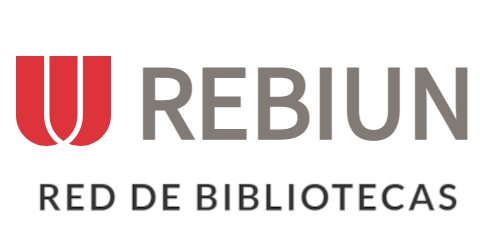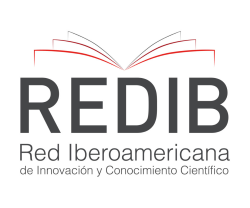Ansiedad matemática y aprendizaje geométrico: una reflexión acerca de sus implicaciones en el contexto formativo
Resumen
Las matemáticas desempeñan un papel importante en todos los aspectos de la vida, pero la principal contribución de las matemáticas es en el ámbito de la educación. Dada la magnitud del papel de las matemáticas en la transformación de la civilización humana, es una rama de que debe ser dominada por los estudiantes de la escuela secundaria. Sin embargo, las matemáticas se perciben como una de las asignaturas más difíciles de aprender debido a su complejidad y naturaleza abstracta. Es por ello que, el presente artículo, tiene como objetivo desarrollar una reflexión crítica acerca de la influencia de la ansiedad matemática en el aprendizaje geométrico, y sugerir estrategias para limitar la reacción emocional negativa a las matemáticas en el contexto formativo. Se concluye que el concepto de ansiedad por las matemáticas, que afecta considerablemente a los niveles de éxito en matemáticas de los estudiantes, no puede abarcar completamente el tema de la ansiedad por la geometría y que la ansiedad por la geometría puede observarse por separado de la ansiedad por las matemáticas.
Descargas
Citas
Abín, A., Núñez, J. C., Rodríguez, C., Cueli, M., García, T., & Rosário, P. (2020). Predicting Mathematics Achievement in Secondary Education: The Role of Cognitive, Motivational, and Emotional Variables. Frontiers in Psychology, 11. https://doi.org/10.3389/fpsyg.2020.00876
Ashcraft, M. H., Krause, J. A., & Hopko, D. R. (2007). Is math anxiety a mathematical learning disability? In Why is math so hard for some children? The nature and origins of mathematical learning difficulties and disabilities. (pp. 329–348). Paul H. Brookes Publishing Co.
Ashcraft, M. H., & Ridley, K. S. (2005). Math anxiety and its cognitive consequences: A tutorial review. In Handbook of mathematical cognition. (pp. 315–327). Psychology Press.
Atteh, E. (2020). The Nature of Mathematics Education: The Issue of Learning Theories and Classroom Practice. Asian Journal of Education and Social Studies. https://doi.org/10.9734/AJESS/2020/v10i230265
Bellinger, D. B., DeCaro, M. S., & Ralston, P. A. S. (2015). Mindfulness, anxiety, and high-stakes mathematics performance in the laboratory and classroom. Consciousness and Cognition, 37, 123–132. https://doi.org/10.1016/j.concog.2015.09.001
Bulmahn, B. J., & Young, D. M. (1982). On the Transmission of Mathematics Anxiety. The Arithmetic Teacher, 30(3), 55–56. https://doi.org/10.5951/AT.30.3.0055
de Corte, E., Depaepe, F., Eynde, P. O. t., & Verschaffel, L. (2011). Students’ self-regulation of emotions in mathematics: An analysis of meta-emotional knowledge and skills. ZDM - International Journal on Mathematics Education, 43(4), 483–495. https://doi.org/10.1007/s11858-011-0333-6
Gafoor, K., & Kurukkan, A. (2015). Why High School Students Feel Mathematics Difficult? An Exploration of Affective Beliefs. UGC Sponsored National Seminar on Pedagogy of Teacher Education Trends and Challenges, August, 1–6. bit.ly/37OLqE7
Gan, S. K.-E., Lim, K. M.-J., & Haw, Y.-X. (2016). The relaxation effects of stimulative and sedative music on mathematics anxiety: A perception to physiology model. Psychology of Music, 44(4), 730–741. https://doi.org/10.1177/0305735615590430
Gómez, O., García-Cabrero, B., Hoover, M. L., Castañeda-Figueiras, S., & Benítez, Y. G. (2020). Achievement Emotions in Mathematics: Design and Evidence of Validity of a Self-Report Scale. Journal of Education and Learning, 9(5), 233. https://doi.org/10.5539/jel.v9n5p233
Grisales Aguirre, A. M. (2018). Uso de recursos TIC en la enseñanza de las matemáticas: retos y perspectivas. Entramado, 14(2), 198–214. https://doi.org/10.18041/1900-3803/entramado.2.4751
Hallowell, E. (2012). Ferrari engines, bicycles brakes. Educational Leadership, 70(2), 36–38.
Hernández, R., Fernández, C., & Baptista, P. (2014). Metodología de la investigación. In Journal of Chemical Information and Modeling. https://doi.org/10.1017/CBO9781107415324.004
Heyd-Metzuyanim, E. (2013). The co-construction of learning difficulties in mathematics—teacher–student interactions and their role in the development of a disabled mathematical identity. Educational Studies in Mathematics, 83(3), 341–368. https://doi.org/10.1007/s10649-012-9457-z
Huise Leal, S., & Bong Anderson, S. (2015). La resolución de problemas matemáticos en el contexto de los proyectos de aprendizaje. Revista de Investigación No 84, 39, 71–93.
Kollosche, D. (2019). Reasons for Auto-exclusion: Why Students Reject Mathematics. In Inclusive Mathematics Education (pp. 449–465). Springer International Publishing. https://doi.org/10.1007/978-3-030-11518-0_26
Laos, M. (2017). Percepción visual y habilidades matemáticas en estudiantes de inicial -5años- instituciones educativas Red 03. In Universidad César Vallejo.
Misnasanti, & Mahmudi, A. (2018). Van Hiele Thinking Level and Geometry Visual Skill towards Field Dependent-Independent Students in Junior High School. Journal of Physics: Conference Series, 1097(1), 0–7. https://doi.org/10.1088/1742-6596/1097/1/012133
Moneva, D. J. C., & Valle, A. F. S. (2020). Difficulty in Mathematics: Close Assistance and Self-Confidence. Journal of Studies in Education, 10(1), 117. https://doi.org/10.5296/jse.v10i1.16460
Murcia, M., & Henao, J. (2015). Educación matemática en Colombia, una perspectiva evolucionaria. Entre Ciencia e Ingeniería, 9(18), 23–30. https://doi.org/10.31908/19098367.2684
Nur, A. S., & Nurvitasari, E. (2017). Geometry Skill Analysis In Problem Solving Reviewed From The Difference Of Cognitive Style Students Junior High School. Journal of Educational Science and Technology (EST), 204–210. https://doi.org/10.26858/est.v3i3.4130
Park, D., Ramirez, G., & Beilock, S. L. (2014). The role of expressive writing in math anxiety. In Journal of Experimental Psychology: Applied (Vol. 20, Issue 2, pp. 103–111). American Psychological Association. https://doi.org/10.1037/xap0000013
Pekrun, R., & Linnenbrink-Garcia, L. (2012). Academic emotions and student engagement. In Handbook of research on student engagement. (pp. 259–282). Springer Science + Business Media. https://doi.org/10.1007/978-1-4614-2018-7_12
Riastuti, N., Mardiyana, & Pramudya, I. (2017). Analysis of students geometry skills viewed from spatial intelligence. AIP Conference Proceedings, 1913(December). https://doi.org/10.1063/1.5016658
Rojano, I. D. F., & Guevara, N. Y. C. (2019). Consideraciones sobre la investigación en educación matemática en Colombia. Revista Educación y Ciudad, 2(37 SE-Contenidos). https://doi.org/10.36737/01230425.v2.n37.2019.2153
Rozgonjuk, D., Kraav, T., Mikkor, K., Orav-Puurand, K., & Täht, K. (2020). Mathematics anxiety among STEM and social sciences students: the roles of mathematics self-efficacy, and deep and surface approach to learning. International Journal of STEM Education, 7(1), 46. https://doi.org/10.1186/s40594-020-00246-z
Rubinsten, O., & Tannock, R. (2010). Mathematics anxiety in children with developmental dyscalculia. Behavioral and Brain Functions : BBF, 6, 46. https://doi.org/10.1186/1744-9081-6-46
Serin, H. (2018). Perspectives on the Teaching of Geometry: Teaching and Learning Methods. Journal of Education and Training, 5(1), 1. https://doi.org/10.5296/jet.v5i1.12115
Sherard, W. H. (1981). Why is geometry a basic skill? The Mathematics Teacher, 74(1), 19–60. https://doi.org/10.5951/MT.74.1.0019
Sinclair, N., Moss, J., Hawes, Z., & Stephenson, C. (2018). Learning Through and from Drawing in Early Years Geometry (pp. 229–252). https://doi.org/10.1007/978-3-319-98767-5_11
Skaalvik, E. M. (2018). Mathematics anxiety and coping strategies among middle school students: relations with students’ achievement goal orientations and level of performance. Social Psychology of Education, 21(3), 709–723. https://doi.org/10.1007/s11218-018-9433-2
Sumantri, M. S., & Satriani, R. (2016). The effect of formative testing and self-directed learning on mathematics learning outcomes. International Electronic Journal of Elementary Education, 8(3), 507–524.
Ubi, E. E., & Odiong, A. U. (2018). Geometry Viewed as a Difficult Mathematics. International Journal of Innovative Science and Research Technology, 3(11), 251–255.
Vidad, D. C., & Quimbo, M. A. T. (2021). Students’ Problem-solving Difficulties and Coping Strategies in Mathematics: A Model- Building Study. International Journal of Learning, Teaching and Educational Research, 20(9), 136–173. https://doi.org/10.26803/ijlter.20.9.9
Villamizar Acevedo, G., Araujo Arenas, T. Y., & Trujillo Calderón, W. J. (2020). Relación entre ansiedad matemática y rendimiento académico en matemáticas en estudiantes de secundaria Relationship between mathematical anxiety and academic performance in mathematics in high school students Relação entre ansiedade matemática e rendiment. Ciencias Psicológicas, 14(1), 1–13.
Derechos de autor 2022 Roberto Carlos Pérez Martínez

Esta obra está bajo licencia internacional Creative Commons Reconocimiento 4.0.











.png)




















.png)
1.png)


